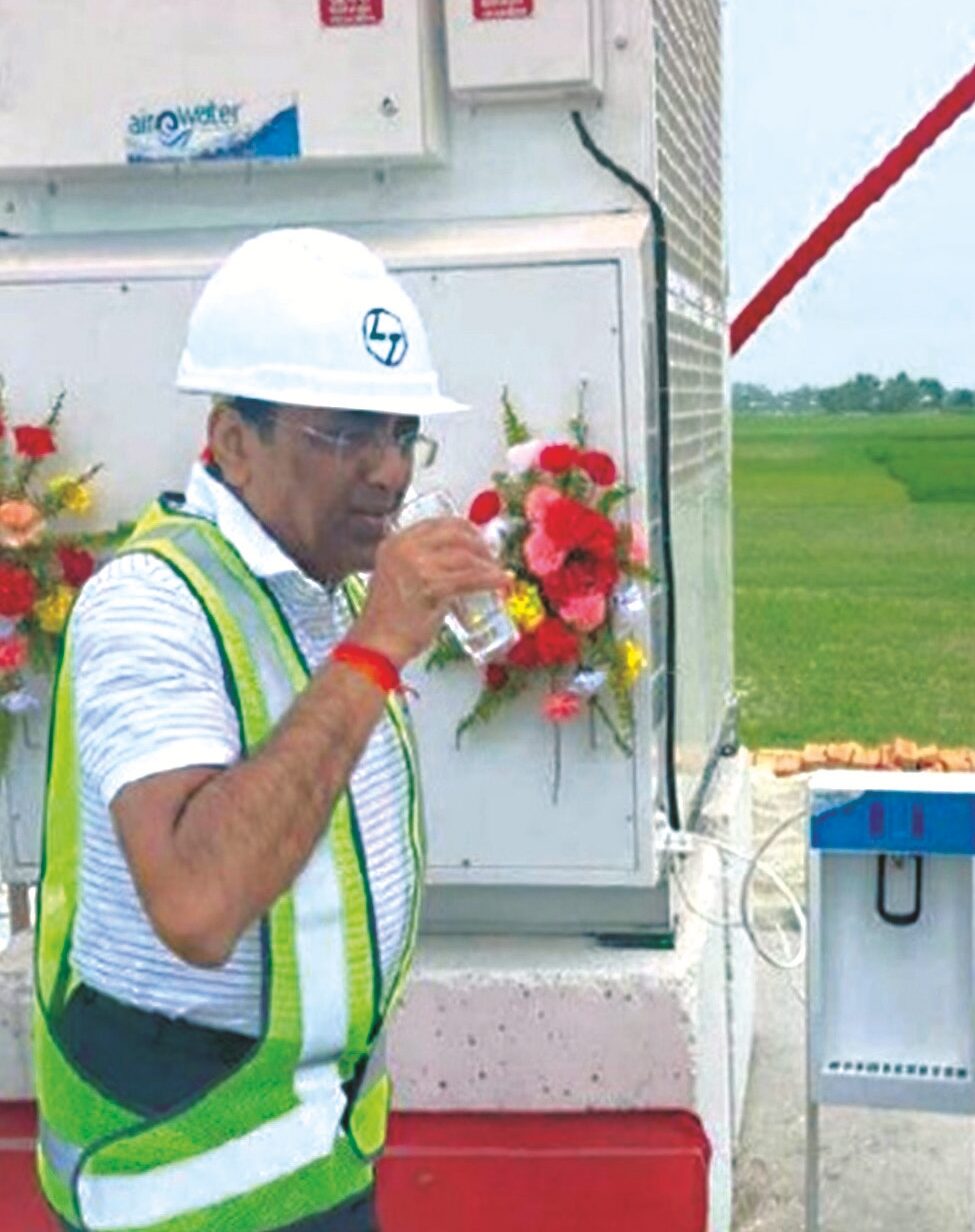Making water out of thin air
The Dhubri–Phulbhari Project of RREC TI IC is a challenging one, not only due to its engineering complexities but also for its remoteness, accessibility, and dearth of civil infrastructure. While mobilization was a tough task, a major challenge for the team was to consistently provide good-quality potable drinking water to the staff and workmen. There were no alternate means of water primarily due to the high turbidity levels in ground water, and there were challenges to transport water to inaccessible locations like islands, barges, jetties, and the like.
The answer lay in installing the latest technology of producing water from moisture in the air. It is a fact that there is six times more water in the air than in all the world’s rivers combined, and only 1% of the water in the atmosphere is sufficient to meet the total requirements of humanity, flora, and fauna.
“Through our new air-to-water initiative, we are addressing the problem of drinking water at remote sites and also demonstrating our commitment to ESG,” remarks Sumit Bardhan, Vice President & Head – Operational Services, RREC SBG, TI IC.


Through our new air-to-water initiative, we are addressing the problem of drinking water at remote sites and also demonstrating our commitment to ESG.
Sumit Bardhan
Vice President & Head – Operational Services,
RREC SBG, TI IC


After due study, the RREC team hit upon a solution: installing air-to-water plants at the site. Several options were explored and finally Atmospheric Water Generation technology was identified as the perfect one to meet this specific requirement. It was scalable, rapidly deployable, and not dependent on the availability of groundwater; instead, it depended on atmospheric humidity.
With an equipment warranty of 15 years and zero wastage of water unlike RO plants where thrice the water produced is wasted, this air-to-water plant is the perfect solution in extreme terrains and conditions. A significant step towards water sustainability, atmospheric airto-water plants tap into the humidity present in the atmosphere, are reliable, and are a clean source of potable water.
The air-to-water technology has since been cascaded to other RREC projects like HSR C6 and Mumbai HQ, to name a couple.
“Every incident prevented by safety measures pays for itself, and in most cases, this will cover the cost of protecting our employees,” observes S P Rajan, General Manager & Head – Competency Centre, RREC SBG, TI IC.

Every incident prevented by safety measures pays for itself, and in most cases, this will cover the cost of protecting our employees.
S P Rajan
General Manager & Head – Competency Centre,
RREC SBG, TI IC

